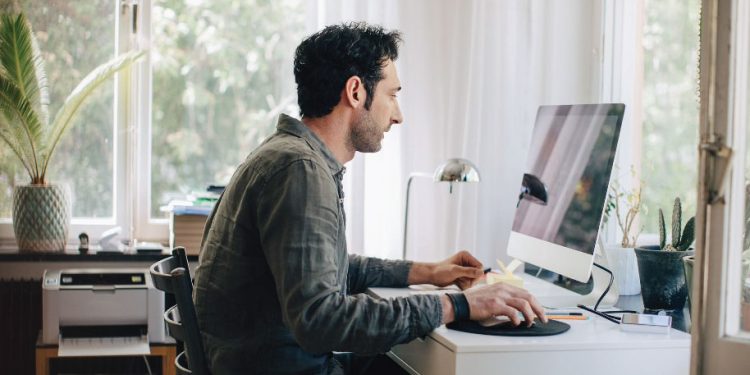Live proctoring is an online exam monitoring solution that ensures that students follow the rules and regulations of the exam. It is very important for online education because it helps to ensure the authenticity and validity of exam results. This tool helps prevent cheating and fraud that can compromise the integrity of online exams.
The purpose of this article is to find out what proctored exam is, its significance for online education and how it works. In addition, it aims to highlight the benefits of using online proctoring and how it can improve online exam procedures.
Live proctoring is a method of monitoring online exams in real-time using webcams and microphones to ensure that students are not cheating. It uses online platforms based on artificial intelligence and machine learning algorithms, which are needed, among other things, to monitor the actions of students, identify any suspicious behavior and notify proctors in real time about any violations.
Real-time proctoring features include live video streaming, voice recognition, facial recognition, and keyboard tracking.
Use cases of Live Proctoring
Live proctoring is mainly used by educational institutions offering distance learning courses, certification agencies and organizations conducting employee training programs. This is a fairly reliable alternative to traditional face-to-face testing and eliminates the need for physical examination centers. Using online platforms, schools and organizations can confidently conduct online exams, knowing that students cannot cheat.
The best example of a real-time monitoring platform is ProctorEdu. It offers various services, including operational proctoring, automated proctoring and hybrid proctoring, which combines both operational and automated proctoring. This platform is easy to use and integrate with existing e-learning platforms such as Blackboard, Canvas and Moodle.
Why Live Proctoring Matters
With the rise of online education and testing, live proctoring is increasingly becoming an essential component in ensuring fair and secure assessments. It comes as no surprise that modern advances in technology now provide a reliable and safe way to monitor students during exams while verifying their identity.
The advantages of live proctoring for students are manifold. Firstly, it guarantees a level playing field, ensuring that all students are taking the same exam under the same testing conditions. Consequently, there is no room for unfair advantages due to cheating or misconduct. Additionally, it creates accountability for students as they are aware of the consequences of attempting to cheat.
For educators, live proctoring plays a critical role in preventing cheating and assuring the accuracy of test results. This holds particular significance in online education, where monitoring for cheating can be challenging due to the virtual nature of the learning environment. By employing live proctoring, educators are confident that their students are being tested fairly and that their exam results reflect their true abilities.
Challenges of Exam Proctoring
Despite the benefits, there are also challenges associated with live proctoring. One of the biggest challenges is ensuring that the technology is both reliable and easy to use. It’s also important to make sure that students are comfortable using the technology and understand how it works.
Another challenge is maintaining academic integrity in online settings. This can be difficult due to the ease of access to information and the potential for collaboration between students. By using live proctoring, educators can help to prevent cheating and maintain a high level of academic integrity.
Common Misconceptions About Live Proctoring
Live Proctoring is often portrayed as invasive, with concerns about camera and microphone monitoring, or even the use of eye-tracking technology. However, most solutions use advanced algorithms and AI technology to monitor students’ exam behavior and detect suspicious activity, without the need for human intervention or invasion of privacy.
Another common misconception is that live proctoring constantly monitors students throughout the entire exam period. But this is not the case. Most solutions only activate during specific times, such as when a student is accessing the exam, or when suspicious activity is detected.
Finally, there are concerns about fairness and student privacy. It is important for institutions to communicate clearly with their students regarding their data privacy policies and provide reassurances that their information will be kept confidential.
Additionally, institutions can ensure fairness by being transparent about their proctoring policies, providing clear instructions on what behaviors are prohibited during exams, and giving students opportunities to dispute any accusations of misconduct.
Conclusion
Live proctoring is a cutting-edge tool that is instrumental in safeguarding the integrity of online exams and assessments. Apart from its ability to monitor activities in real-time, and share screens, it offers a reliable means of student identification and helps to mitigate cheating during remote evaluations.
Given the inherent benefits of live proctoring, educators should consider integrating it into their online courses. Doing so will ensure that assessments are conducted fairly and accurately, and verify the excellence of their academic programs.





